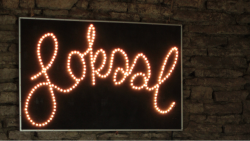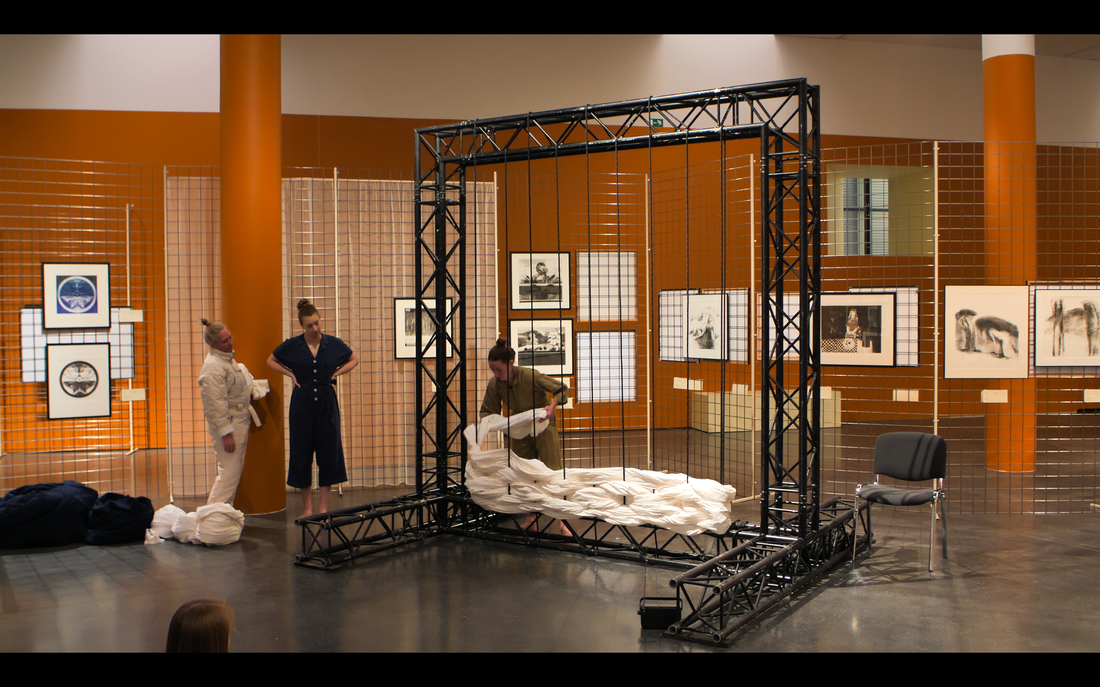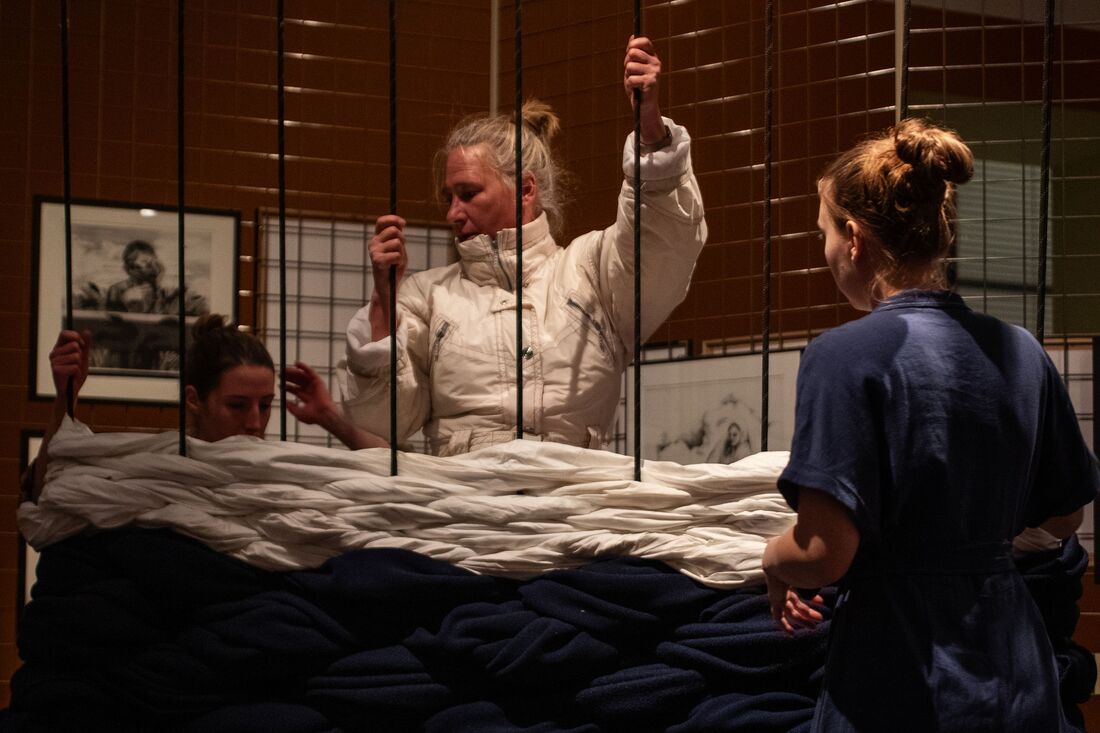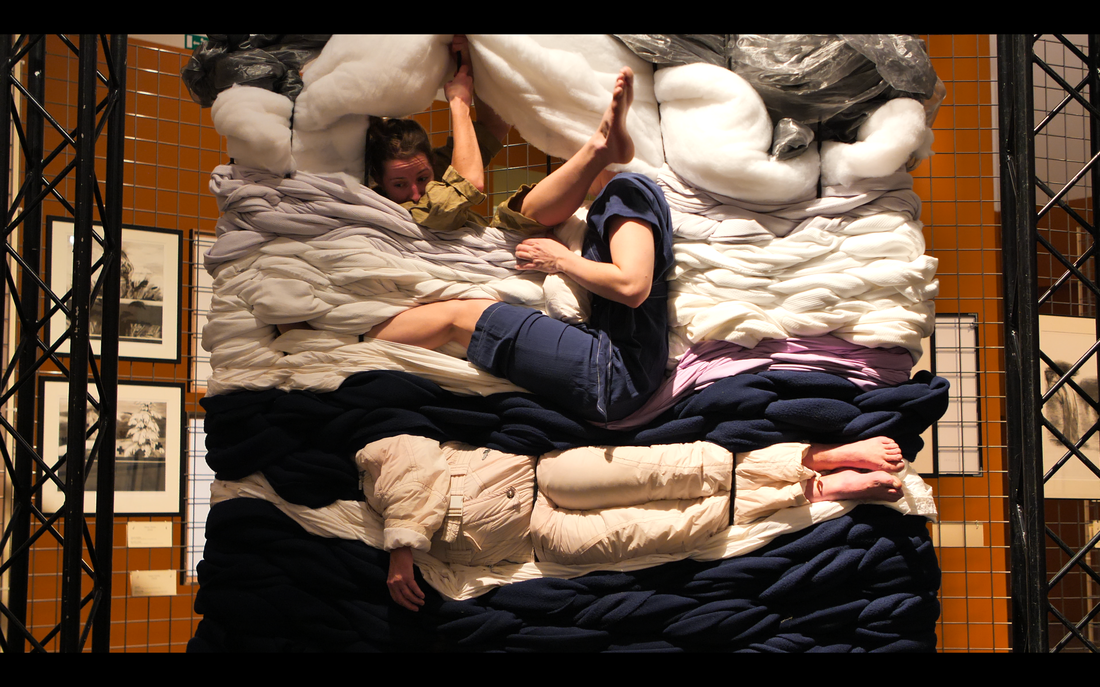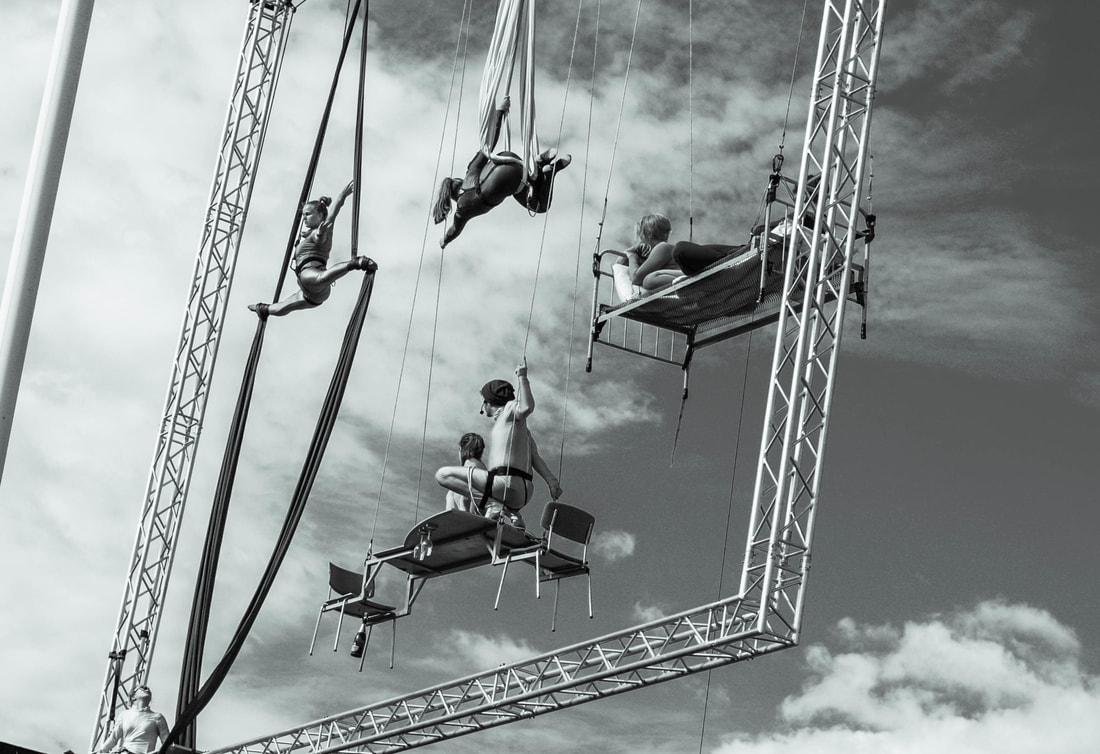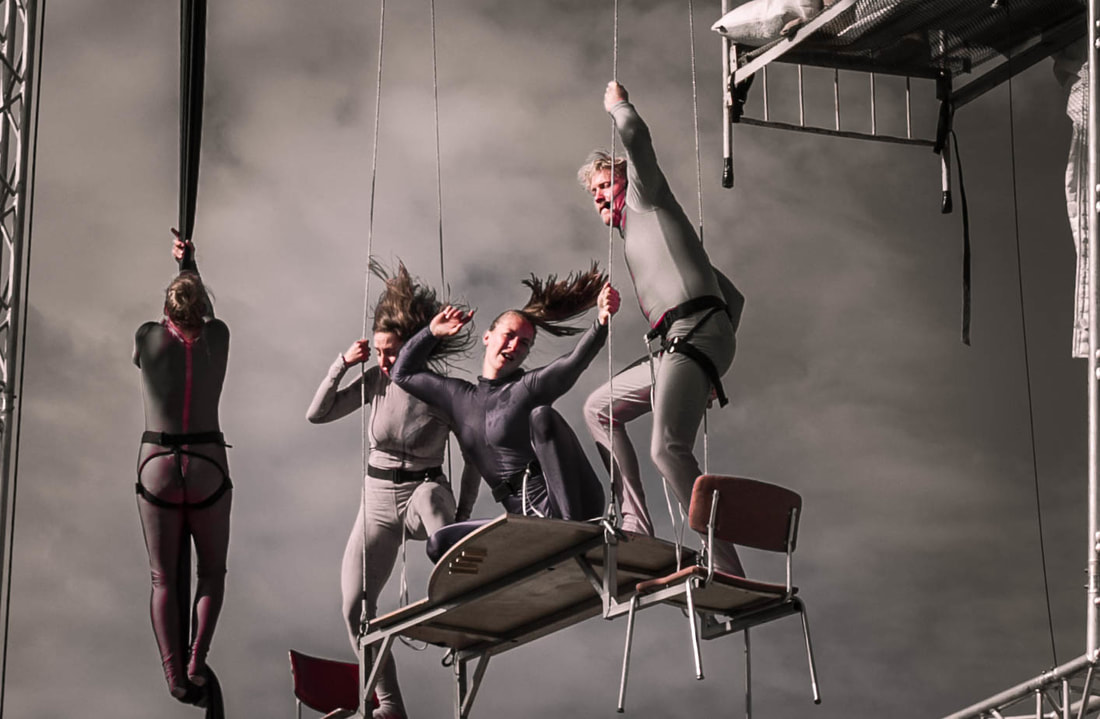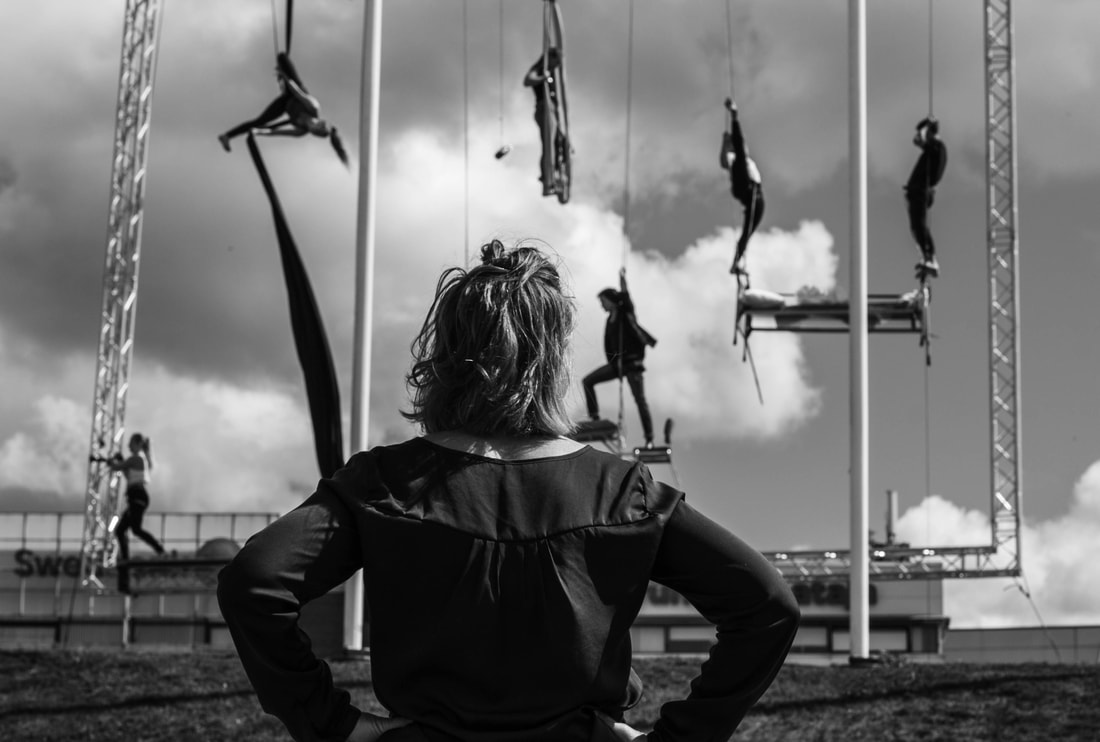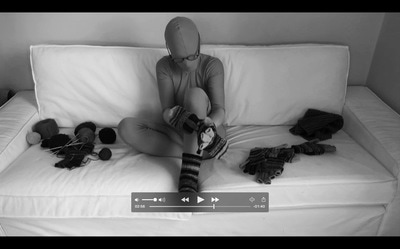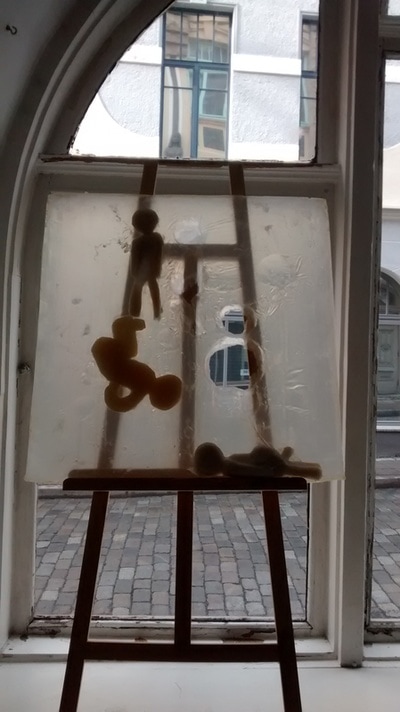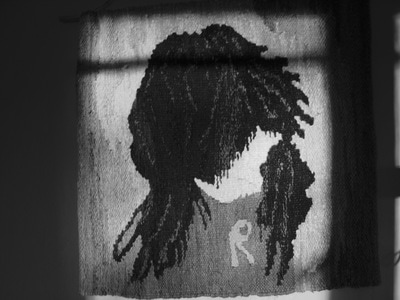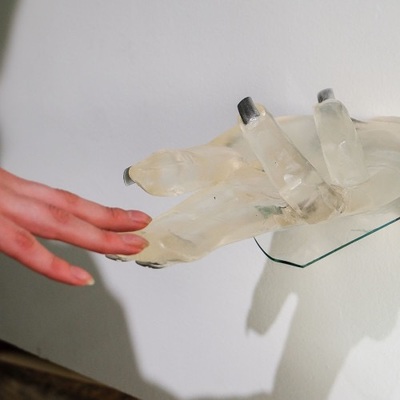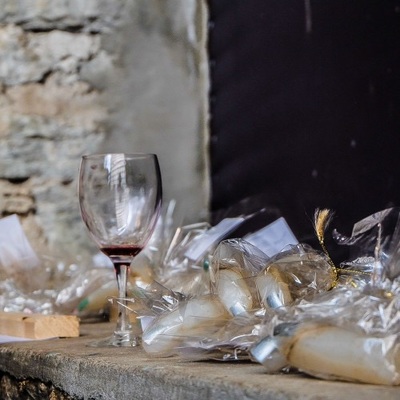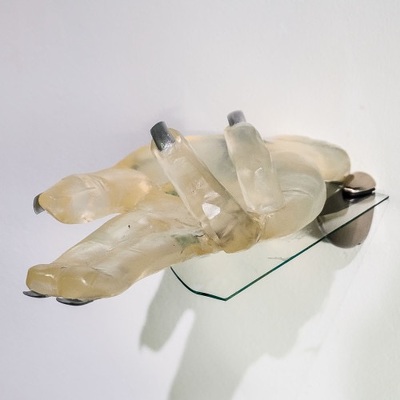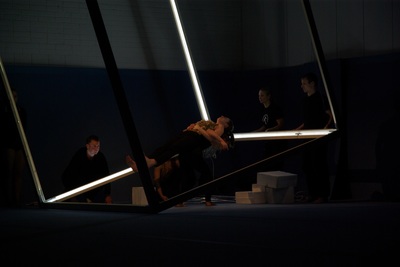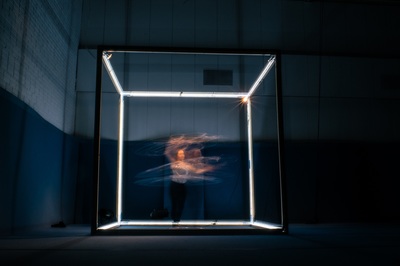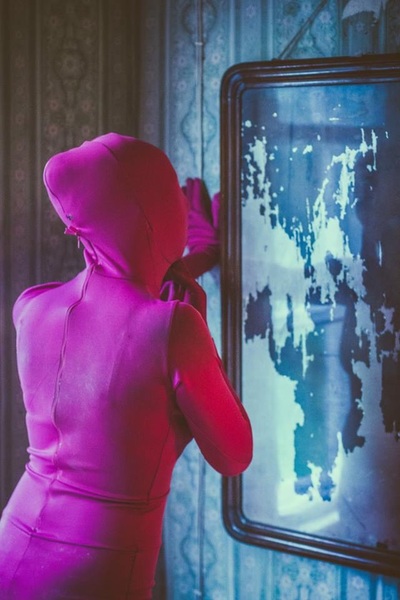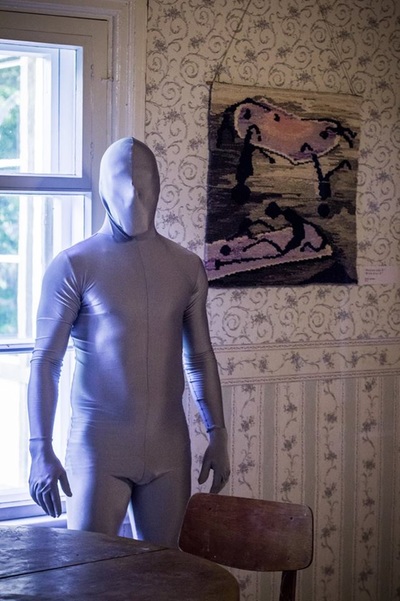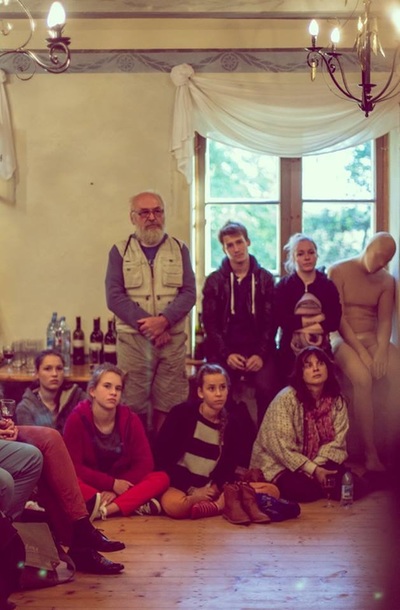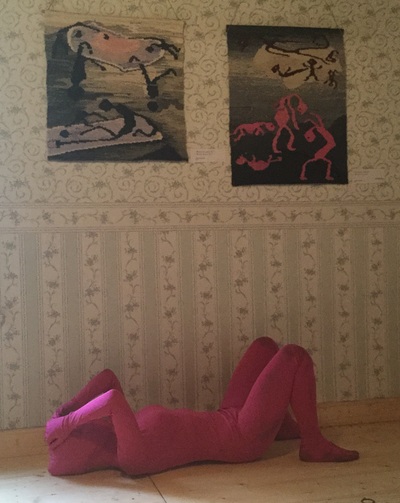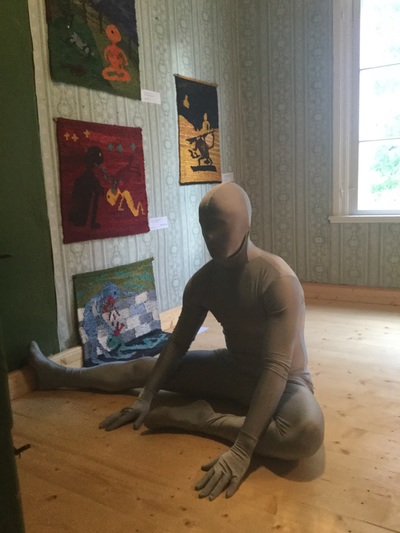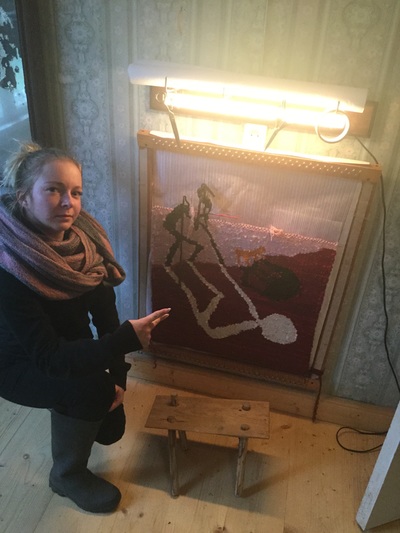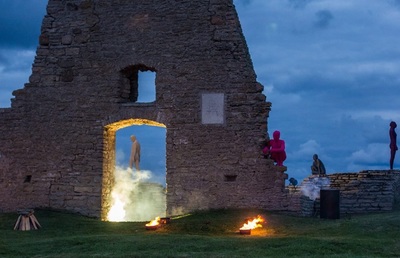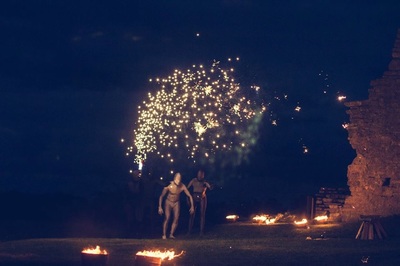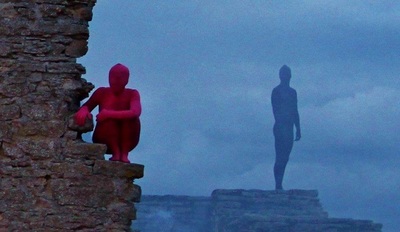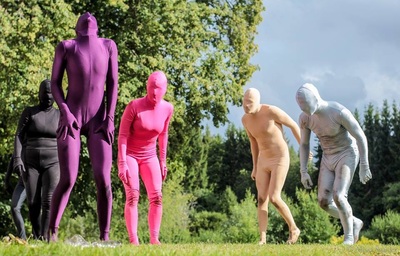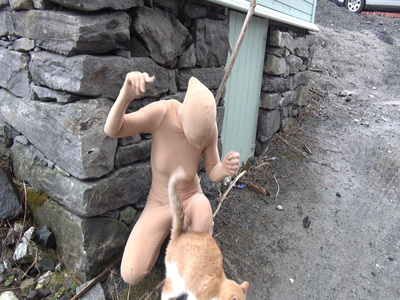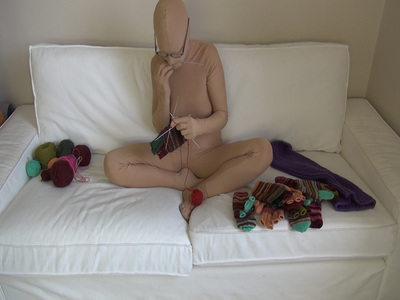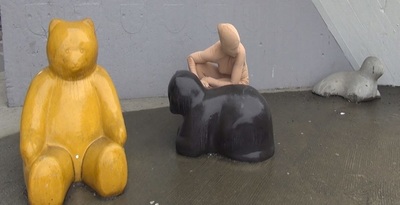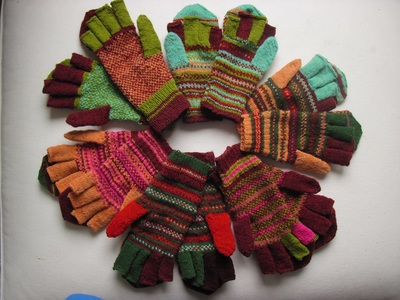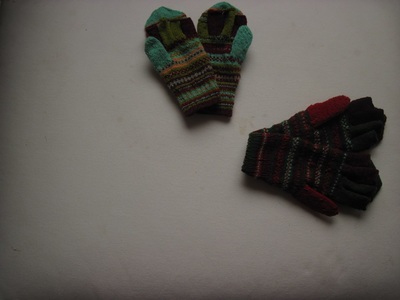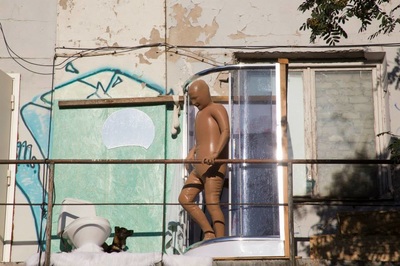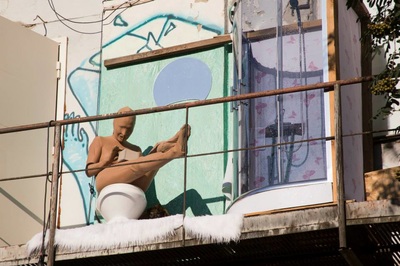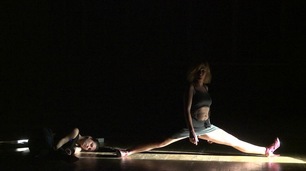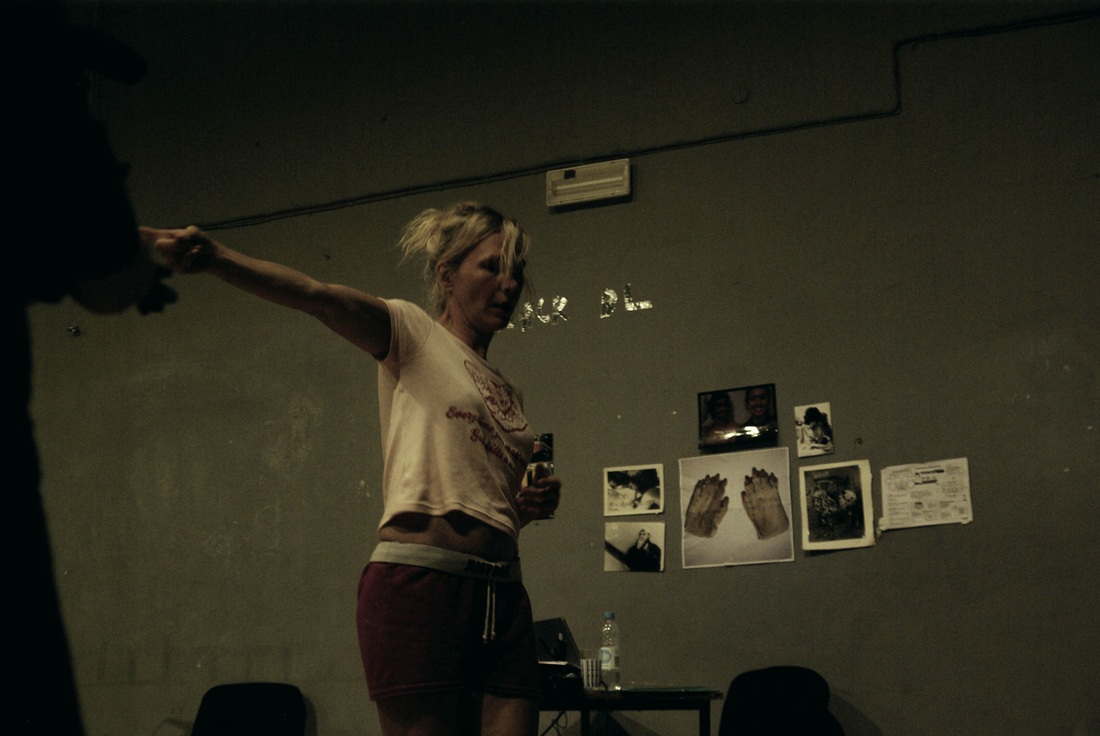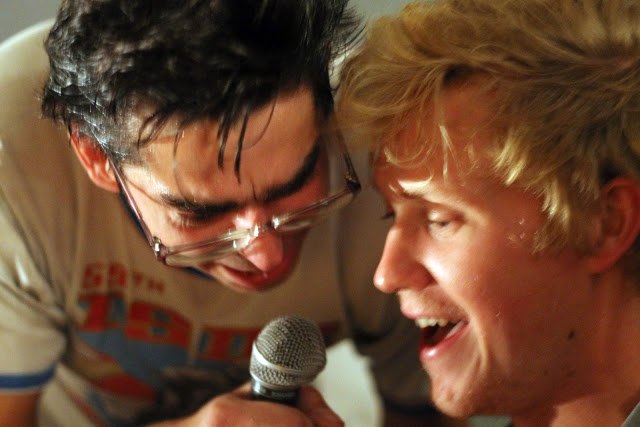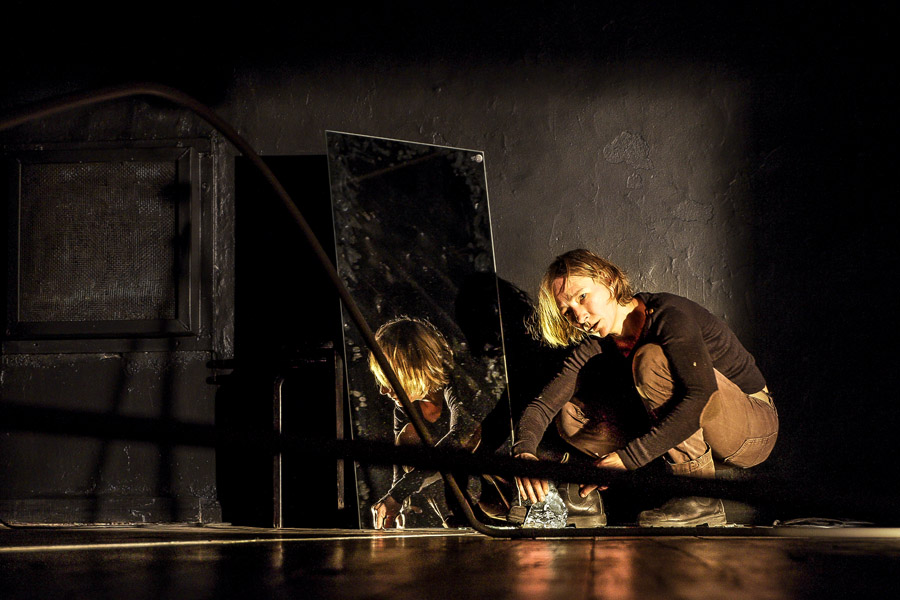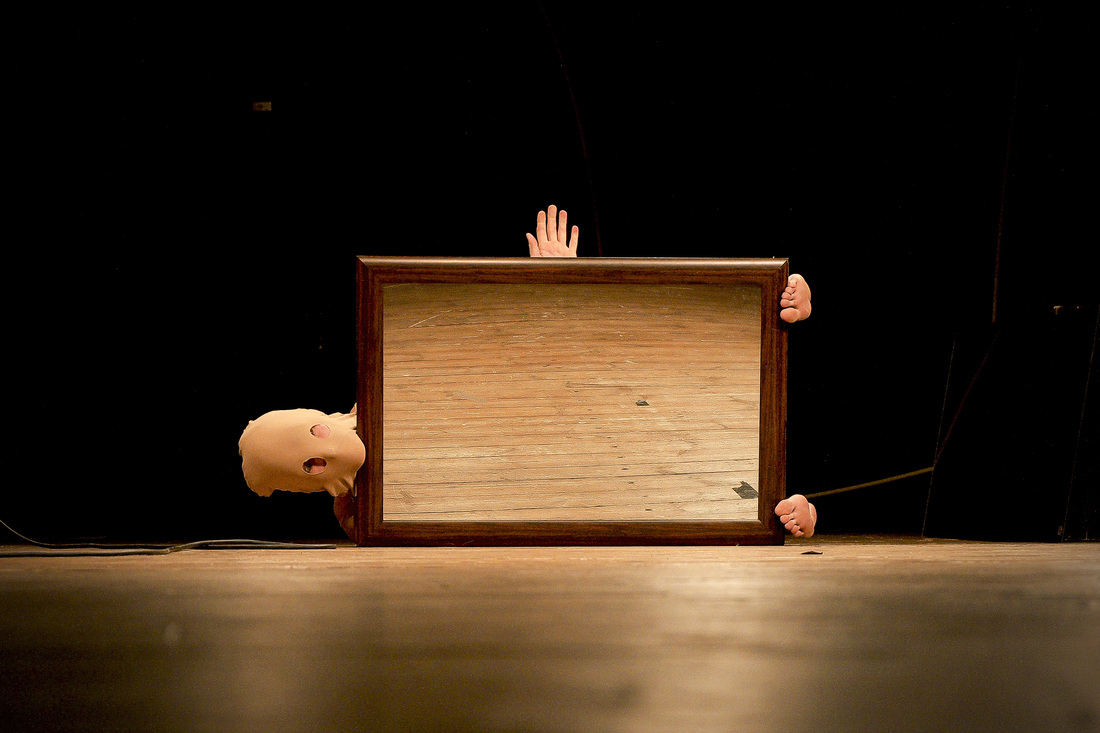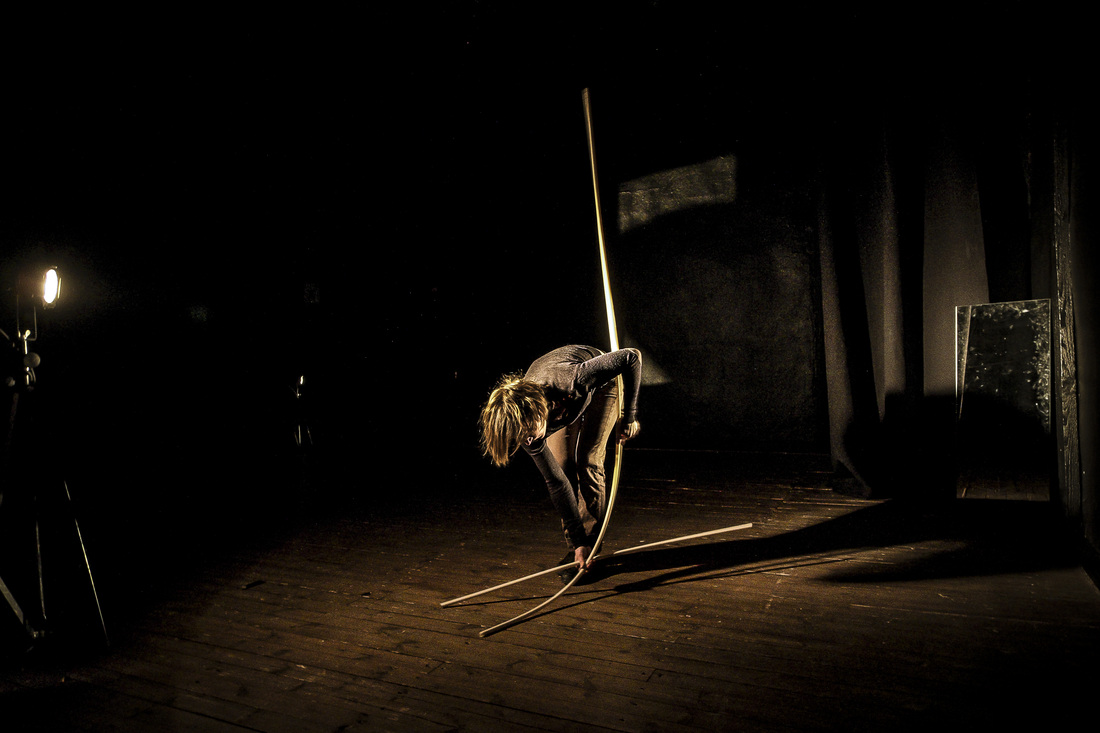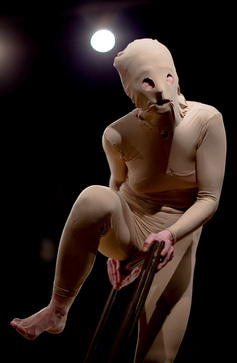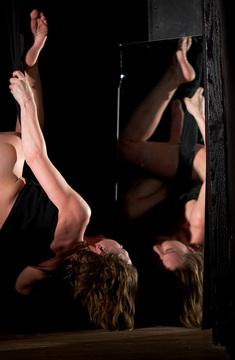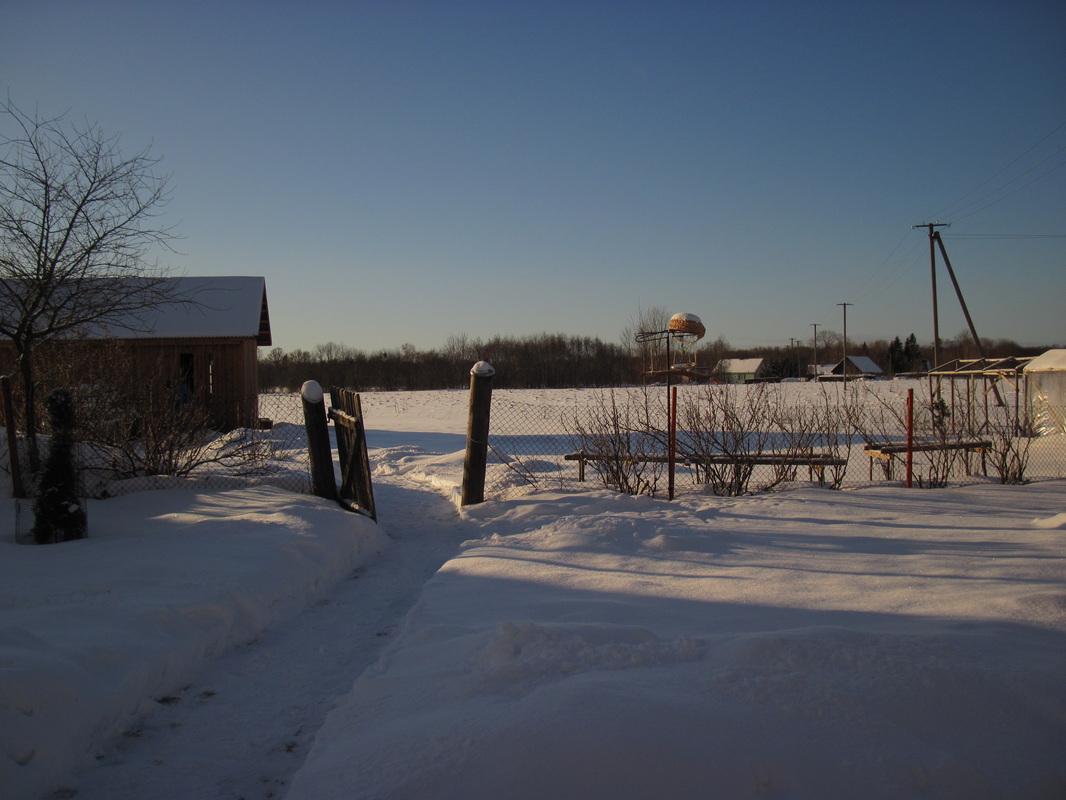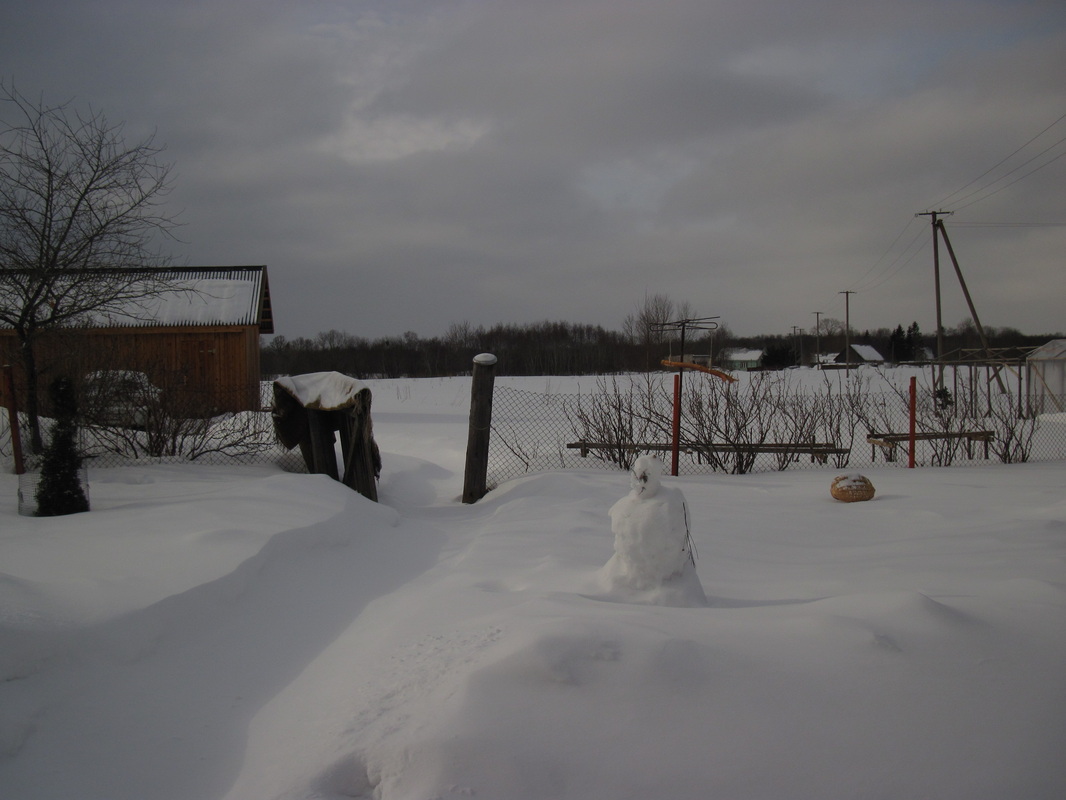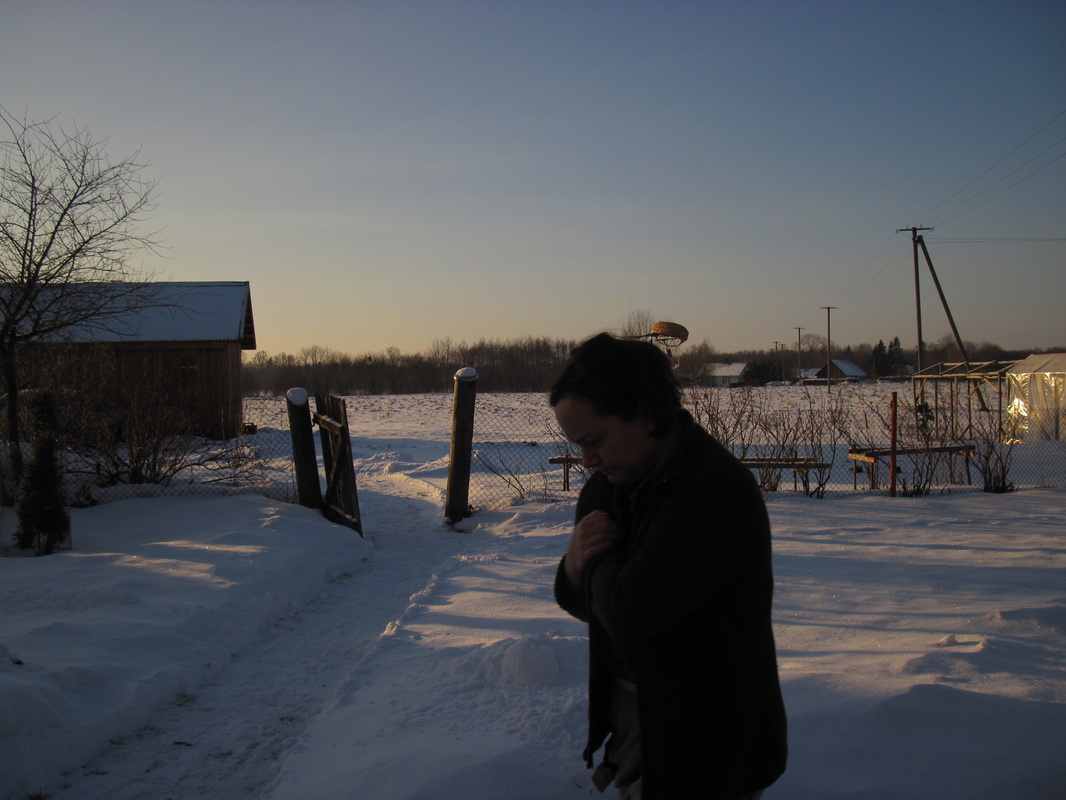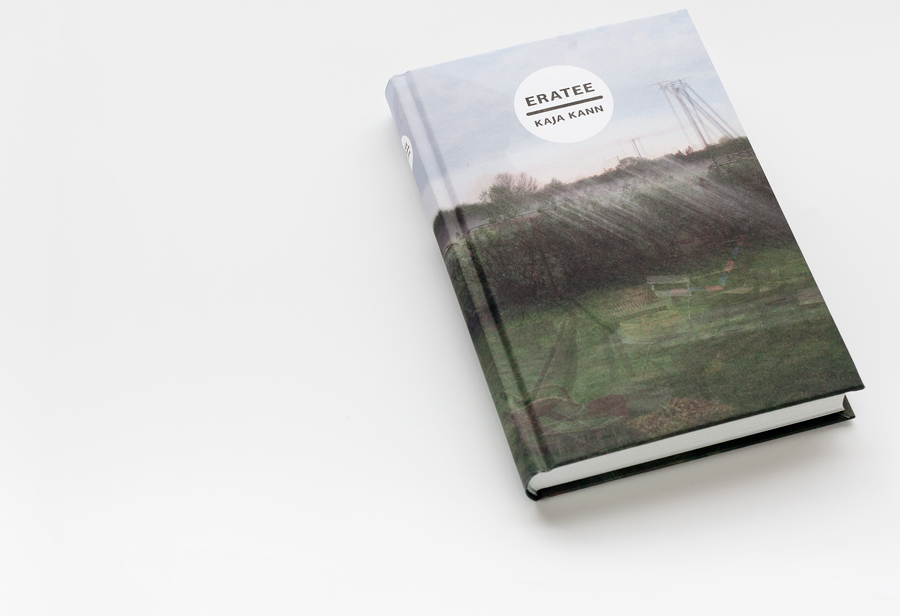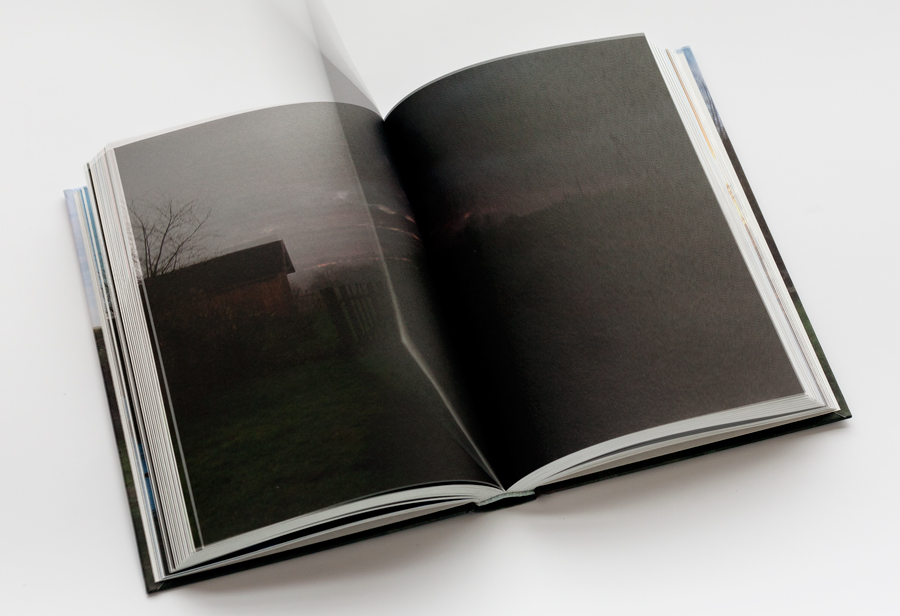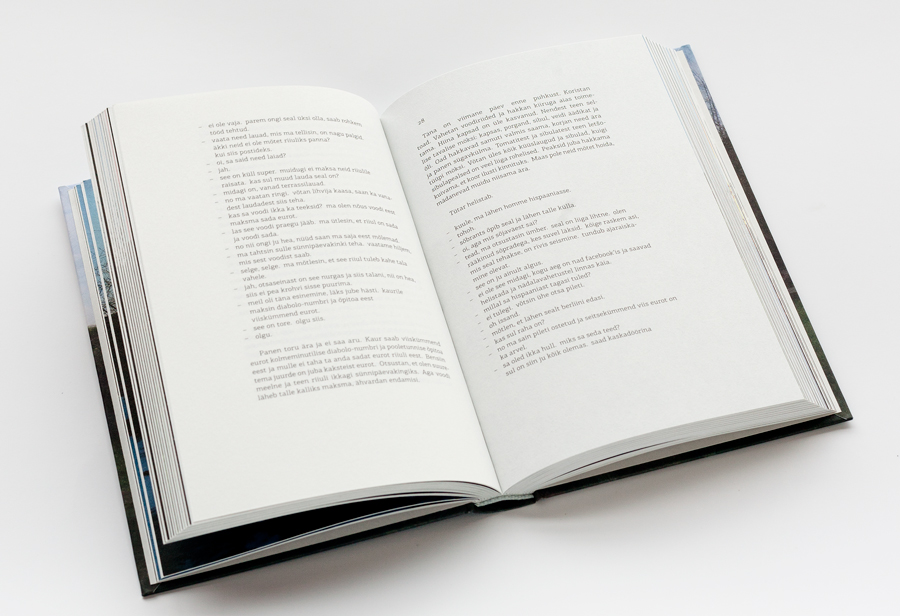Kaja Kann’s performance “Rebellion”, 2023
On 26 and 27 October at 6 pm Kaja Kann’s performance “Rebellion” will take place in the Great Hall of Kumu. The performance was inspired by the exhibition “Through the Black Gorge of Your Eyes”.
tapestr meets graphics
There will be an uprising in “Rebellion”, but the performing artists will simultaneously keep it from turning into a riot. Three artists will weave a large tapestry during the performance. As thread they will be using ropes that they have used before in their stunt work, and as material they will be using worn-out aerial silks and their own three much-used bodies. In the end, performativity and the static picture will intertwine in a very dynamic manner thanks to the bodily material.
Kaja Kann (1973) is an internationally recognised free-lance performance artist whose (visual) language is direct, often black and white and sharp. Her actions have been likened to playing: she seems to be playing a circus, playing music, playing at dancing, or playing at writing a book or a critical article. Kann does not willingly assent to that characterisation, but if pushed she will admit that it is a hell of a serious game: a life-or-death kind of game. Although she uses various materials in her performances, the main focus is always on the interrelations between bodies and materials.
Idea: Kaja Kann
Performers: Kädi Metsoja, Kristin Made and Kaja Kann
Technical solutions: Margus Terasmees
Photos: Epp Kubu
Duration: 45 minutes
The event is part of the exhibition “Through the Black Gorge of Your Eyes”. The exhibition opens a new perspective on the oeuvre of Estonian women graphic artists who emerged in the second half of the 1960s. In addition to relating in various ways to the environments and circumstances of those years, their works and the topics dealt with also fit the current state of art and society. The contemporary performance artists Jette Loona Hermanis, Kaja Kann and Keithy Kuuspu have been invited to performatively relate to the artists and their works
tapestr meets graphics
There will be an uprising in “Rebellion”, but the performing artists will simultaneously keep it from turning into a riot. Three artists will weave a large tapestry during the performance. As thread they will be using ropes that they have used before in their stunt work, and as material they will be using worn-out aerial silks and their own three much-used bodies. In the end, performativity and the static picture will intertwine in a very dynamic manner thanks to the bodily material.
Kaja Kann (1973) is an internationally recognised free-lance performance artist whose (visual) language is direct, often black and white and sharp. Her actions have been likened to playing: she seems to be playing a circus, playing music, playing at dancing, or playing at writing a book or a critical article. Kann does not willingly assent to that characterisation, but if pushed she will admit that it is a hell of a serious game: a life-or-death kind of game. Although she uses various materials in her performances, the main focus is always on the interrelations between bodies and materials.
Idea: Kaja Kann
Performers: Kädi Metsoja, Kristin Made and Kaja Kann
Technical solutions: Margus Terasmees
Photos: Epp Kubu
Duration: 45 minutes
The event is part of the exhibition “Through the Black Gorge of Your Eyes”. The exhibition opens a new perspective on the oeuvre of Estonian women graphic artists who emerged in the second half of the 1960s. In addition to relating in various ways to the environments and circumstances of those years, their works and the topics dealt with also fit the current state of art and society. The contemporary performance artists Jette Loona Hermanis, Kaja Kann and Keithy Kuuspu have been invited to performatively relate to the artists and their works
Kaja Kann & CO (EST) OPENING OF THE FESTIVAL BALTOSCANDAL in Town Square on July 4st, 2018
Opening show of the festival with circus artists and local or not so local noteworthy people chosen by the director Kaja Kann. We celebrate the jubilee of Baltoscandal together with town´s people with a spirited performance both on land and in the air. 20 minutes of joy, fun and happiness.
Jürgen Rooste: "The festivals opening act was directed by Kaja Kann, in Rakvere centre square. Well, everybody knows, that there is a hatchet with Kaja and me - we just understand things in different ways and Kaja is quite a witch. But this time, she conjured one hell of a circus soup. She managed to spice the modern theatre with elements of pop culture. Create a co-existing world between aliens and people (cause as all artists know, we often feel like aliens, foreign bodies). And she hung it all on top of the city. She drew pictures of simple love and beauty, painted a massive music video in the sky. I don’t know, maybe my own mental state is also at fault, but it was mesmerizing. Nothing to do about it - one point for Kaja."
Director: Kaja Kann
Music: Renzo van Steenbergen
Stunts and Circus tricks: Margus Terasmees
Team: Madis Kolk, Alissa Šnaider, Kaur Kivilo
Circus artists: Lars Schmidt, Kädi Metsoja, Liis Maria Kaabel, Edgar Vunsh, Kristin Made, Anni Veskimäe, Johanna Terasmees
Acrobats: Katariina Braun, Anette Kampus, Matthias Kann, Kiwa, Merit Illak, Heidi Kann, Taavo Tiko, Epp Trilla
Performers: Iti Illak, Kaisa Kattai, Helle-Mall Niinemets, Alar Teras, Andres Pulver, Alina Klimova, Ahti Bachblum, Alar Peek, Riho Hütt, Teet Suur, Krõõt Nõmmela-Mehide, Tiiu Alavere, Mirjam Lukme
Jürgen Rooste: "The festivals opening act was directed by Kaja Kann, in Rakvere centre square. Well, everybody knows, that there is a hatchet with Kaja and me - we just understand things in different ways and Kaja is quite a witch. But this time, she conjured one hell of a circus soup. She managed to spice the modern theatre with elements of pop culture. Create a co-existing world between aliens and people (cause as all artists know, we often feel like aliens, foreign bodies). And she hung it all on top of the city. She drew pictures of simple love and beauty, painted a massive music video in the sky. I don’t know, maybe my own mental state is also at fault, but it was mesmerizing. Nothing to do about it - one point for Kaja."
Director: Kaja Kann
Music: Renzo van Steenbergen
Stunts and Circus tricks: Margus Terasmees
Team: Madis Kolk, Alissa Šnaider, Kaur Kivilo
Circus artists: Lars Schmidt, Kädi Metsoja, Liis Maria Kaabel, Edgar Vunsh, Kristin Made, Anni Veskimäe, Johanna Terasmees
Acrobats: Katariina Braun, Anette Kampus, Matthias Kann, Kiwa, Merit Illak, Heidi Kann, Taavo Tiko, Epp Trilla
Performers: Iti Illak, Kaisa Kattai, Helle-Mall Niinemets, Alar Teras, Andres Pulver, Alina Klimova, Ahti Bachblum, Alar Peek, Riho Hütt, Teet Suur, Krõõt Nõmmela-Mehide, Tiiu Alavere, Mirjam Lukme
Exhibitions Ups and Downs in Draakon gallery on February 21st, 2017.
Kann's work in progress commented by Madis Kolk:
„The artist herself states that for her it is the working process that counts the most – during which she thoroughly studies her subject, pours herself out and finally backs away from her work. Creating tapestries started from anger; videos were triggered from fear; and soap excited her.
What is rising and what is falling?
Where is the sky and where is the earth?
Are these creatures from this world or the otherwordly ones; do they portray anything or are they created? And by whom?
Something has fallen out from the soap – whether it is birth or death the artist would not say. I believe that she doesn't know. No one knows, including myself.
All this tells about nature, love and being active; however, the state of activity here seems to be on the verge of dreaming and being awake.
The creatures are both here and there, both earlier and later. It seemes that in the beginning there was an image of a man, followed by visualization that made the hand look distortedly long or did not complete the head. The will of movement is always directed either upwards or downwards, on a vertical axis, it either creates or destroys. It is simultaneously the ebb and the flow; the important aspect here is the dynamic motion of the creature moving between the two. Whether something will rise or fall depends on the creature – through the act of giving up it either lowers its weight or overburdens itself.
Perhaps thanks to the fact that Kaja Kann is a performance artist for whom body and movement are essential working tools she has managed to apply lots of dynamics in her static pieces. Kann is looking for the answers about the place that would include true dynamism and powerful performativity – whether this lies in the hectic fragments of the top floor and in the perception of aloofness carried to the urban space by a curious flaneur or in the ground floor that is hidden from daylight and yearns for eternity. Does a conservative stumble downwards or from the underworld towards eternity? And will one be a conservative then after all?”
Exhibition team: Kalle Tikas, Madis Kolk, Maike Lond Malmborg, Ly Terasmees, Pavo Kann, Merike Lond.
Exhibition is supported by the Cultural Endowment of Estonia and Pardimäe Lokaal.
Video: https://vimeo.com/214126985
Kaja Kann, How deep is your Wash? sculpture, material - soap 2016
|
Exebithion
“Don't be as You Are, Be beautiful !” Opening 7. of April 2016 at 17.00 Gallery Vaal Artists: Alissa Šnaider & Kaja Kann, Mari-Liis Lill, Brit Pavelson, Edith Karlson, Liina Pääsuke, Eva Mustonen, Helena Keskküla, Elis Saareväli, Kadi Adrikorn, Triinu-Liis Rahe, Anna-Stina Treumund, Sander Tuvikene Curator: Rebeka Põldsam Cordinated by: Kaarin Kivirähk Installation by Siim Soop Supported by Cultural Endowment of Estonia |
Оne year ago, when I was a model for Alissa Šnaider’s Image Consultant project, I learned that
The art work presented at current exhibition is a comment of a model to Alissa’s Image Consultant project. Special thanks to Alissa Šnaider, Rene Reinumäe, Johanna Terasmees, Maike Lond |
new circus piece “Present”, at OMAcircus, Tallinn, 2016
Artistes: Kristin Made, Kädi Metsoja, Kaur Kivilo, Johanna Terasmees, Heidi Kann, Maarja Tomingas, Stig Paju, Kaja Kann and OMAtsirkus younsters.
Stunts: Margus Terasmees, Roman Neso Laupmaa, Kaur Kivilo, Jimmy
Prodiucer: Eksperimentaalse Liikumise Keskus
They really build a circus stage, hang the ropes and trapeze, all for the performance to begin. During which something happens – the collective effervesce begins.
The collective effervesce ( a.k.a collective representations) is a term introduced by French thinker Emile Durkheim, which means situation where people communicate both through thought and action. With that an electricity is born, which takes into exaltation. If the gifts round up a lot, then it is too excessive luxury. In that sense they use too much energy on something which is completely useless. In this situation people enjoy art , even if the art is futile, it’s still enjoyable.
Cultural Magazin SIRP, by Aurelia Aasa
“Before the acrobatic Santa Clause and bamboozling elves came, they offered the audience some introductory excitement. At the beginning of the free flowing performance they skillfully used and distracted slightly absent-minded audience. Some member of the audience could even wonder if the guy who’s hanging on the ladder is an aerialist or a belated light technician. So the beginning of the performance was juggling act between reality and trickery and should surely please those who enjoy watching flying circus acrobats in sparkly costumes.”
Stunts: Margus Terasmees, Roman Neso Laupmaa, Kaur Kivilo, Jimmy
Prodiucer: Eksperimentaalse Liikumise Keskus
They really build a circus stage, hang the ropes and trapeze, all for the performance to begin. During which something happens – the collective effervesce begins.
The collective effervesce ( a.k.a collective representations) is a term introduced by French thinker Emile Durkheim, which means situation where people communicate both through thought and action. With that an electricity is born, which takes into exaltation. If the gifts round up a lot, then it is too excessive luxury. In that sense they use too much energy on something which is completely useless. In this situation people enjoy art , even if the art is futile, it’s still enjoyable.
Cultural Magazin SIRP, by Aurelia Aasa
“Before the acrobatic Santa Clause and bamboozling elves came, they offered the audience some introductory excitement. At the beginning of the free flowing performance they skillfully used and distracted slightly absent-minded audience. Some member of the audience could even wonder if the guy who’s hanging on the ladder is an aerialist or a belated light technician. So the beginning of the performance was juggling act between reality and trickery and should surely please those who enjoy watching flying circus acrobats in sparkly costumes.”
personal exhibition “Faceless”, art works in cobbler technic, at Viru Nigula Museum, 2016
“Don’t Kill the Viper”, sitespecific performance in Maarja Chapel, Viru Nigula, 2016
Artistes: Kaur Kivilo , Heidi Kann, Kädi Metsoja, Lars Schmidt, Anni Veskimäe , Stig Paju, Kristin Made.
Behind the Viru Nigula Church, there is stone of the memorial dedicated to Kongla Anna, who was firth warlock, who was burned in the fire. The show was inspired from this event, but done with great honour towards all female dissidents.
The soundtrack was made from local people stories about fear and love. Stories were describing local people attitude to females and to snacks and there was very strong connection - they do not afraid of them, but do not love also.
Behind the Viru Nigula Church, there is stone of the memorial dedicated to Kongla Anna, who was firth warlock, who was burned in the fire. The show was inspired from this event, but done with great honour towards all female dissidents.
The soundtrack was made from local people stories about fear and love. Stories were describing local people attitude to females and to snacks and there was very strong connection - they do not afraid of them, but do not love also.
Video installation from Thromso, presented in internet, “dude without face”
2014 residency showing “Fair Trade”, Thromso, Norway
For 30 days I was in Thromso artist-in-residency, throughout the period I knitted 12 pairs of woolen gloves. I had taken the yarn with me already from Estonia, as my father loved to unweave old scarves and sweaters.
During the open presentation I tried to sell the gloves for a fair price.
video from showing
The system was as following:
To knit one glove it took me one day, hence to knit two gloves it took me two days. So the price for one pair of gloves was Norway’s two day salary. With such price, nobody didn’t want to buy gloves, regardless of the fact that it was locally handmade.
The next offer was for men’s gloves, but as men’s gloves are bigger, so are the price for them. But the higher price is justified as even in Norway men’s salary is slightly bigger than the women’s. Despite, nobody didn’t want to buy the gloves.
I explained them my take on my last month’s work: a video diary was my entertainment, writing a book was the heavy labour and knitting was similar to smoking. I just couldn’t be without knitting, even if it didn’t have any certain goal or artistic ambition. I did it for myself, cause I didn’t know any other way.
The next question was that do they know somebody who desperately needs gloves. Now I was open for business. Every pair of gloves found their owner, but nobody on the spot wanted the gloves for themselves. The new glove-owners were gypsies, homeless, old mother living in the country-side and one artist, who paid with his artistic work, which also took him two days to make.
All’s well that ends well.
During the open presentation I tried to sell the gloves for a fair price.
video from showing
The system was as following:
To knit one glove it took me one day, hence to knit two gloves it took me two days. So the price for one pair of gloves was Norway’s two day salary. With such price, nobody didn’t want to buy gloves, regardless of the fact that it was locally handmade.
The next offer was for men’s gloves, but as men’s gloves are bigger, so are the price for them. But the higher price is justified as even in Norway men’s salary is slightly bigger than the women’s. Despite, nobody didn’t want to buy the gloves.
I explained them my take on my last month’s work: a video diary was my entertainment, writing a book was the heavy labour and knitting was similar to smoking. I just couldn’t be without knitting, even if it didn’t have any certain goal or artistic ambition. I did it for myself, cause I didn’t know any other way.
The next question was that do they know somebody who desperately needs gloves. Now I was open for business. Every pair of gloves found their owner, but nobody on the spot wanted the gloves for themselves. The new glove-owners were gypsies, homeless, old mother living in the country-side and one artist, who paid with his artistic work, which also took him two days to make.
All’s well that ends well.
Live installation in the exhibition “Feeling Queezy" , EKKM, Tallinn 2014
Exhibition titled Feeling Queezy? – a safe environment is created to overcome one’s fears and inspire the audience to become more self-conscious, which is the starting point for any kind of emancipation. The concept “queezy” is by Jennifer Boyd, who combined the words queer and queasy – the left out feel kind of light-headed and sick, which luckily should pass.
Something like that: https://vimeo.com/92443728
Something like that: https://vimeo.com/92443728
ALISSA ŠNAIDER "Three Left Hours (everybody's piece)" 2015
|
Next performance 0.11.15 at 20.00 Kanuti Gildi SAAL
Director: Alissa Šnaider Performer: Kaja Kann Sound artist: Renzo van Steenbergen Light artist: Oliver Kulpsoo Dramaturge: Laur Kaunissaare Dramaturge: Taavi Eelmaa Documentation of the performance: Epp Kubu Photos: Lee Kelomees, Kristin Made Project manager: Mairika Plakso Co-production: Kanuti Gildi SAAL Supported by: Eesti Kultuurkapital Premiere: 29.09.2015 Kanuti Gildi SAAL |
It is not dance, theatre, performance, music, circus, lecture, film, video nor discussion. This is everybody’s piece.
A world too soon matured ends in ennui. It can be however perfect, but it's finished. Hence used up, closed, shoved onto a shelve, underlined, forgotten, dead, burried. It is not true that the magical presence of an actor on any given evening will save a production from an incompetent director or insufficient preparation. Mistakenly taking climax for a triumph, the actor can burn himself up every night and do so in a way that is wholly credible. Spectators might even stand up routinely for an applause and compulsively clap their hands. But he who is disappointment in God, will have to leave with his dream unfulfilled. Taavi Eelmaa "Primer of Estonian Contemporary Theatre” zaum.ee |
A Performance "Be Real My Dear" 2014
|
Author, performer: Kaja Kann
Dramaturg: Maike Lond Choreographer: Kädi Metsoja Music: Maike Lond, Iggy Malmborg Producer: Pardimäe Lokaal Co-producer: Kanuti Gildi SAAL Supporters: Cultural Endowment of Estonia, Hooandja Residency supported by: Nordic and Baltic Mobility programme Duration: 1.30 "Performance artist Kaja Kann turnes her life into a work of art. "You think that a great spirit doesn't need a stick to lean on. I'm just as blind as you, one of my legs is shorter than the other, I lose my mind at the most essential moments. I' m broken, generally raped, slowly groped, systematically fucked. I'm a perfect liar, I am an actor." (K.K) She lets the audience become a secret spectator with a short opportunity to peek through a window over someone's life; as if by glimpsing a moment of being on a fast train passing a house. It is hard to position "Be Real My Dear" into a recognizable section of contemporary performance art. As soon as you begin to understand the key, the pattern changes. |
SIRP - Ott Karulin
“Mirror, mirror on the wall, who is ...” I am! Only, me, as there isn’t anyone else. Not anymore. One me in rays of the spotlight, four mirrors on the corners of the stage. One me, five me, six me, no me. Kaja Kann moved alone a few years ago to Lääne- Virumaa, wrote a book about it called “ Private Road”, created a photo exhibition “Who stole a day?”, which is still viewable in Balti Station tunnel right now, until the real life will take it a part ( around two months worth of daily images are already crabbed by the passers for their own private collections) and solo show “Be Real My Dear”. Performance is uncomfortably real with it’s open routine nakedness. It was so abominable that at the end you feel good that you only have one paltry mirror at home and you don’t really end up in front of it due to busy work and private life. In between a wallet there is no mirror, however in front of your eyes there’s always one. “Be Real My Dear” could feel a bit hard to understand if you have not read Kann’s book, because from aestheticized routine activities on stage (something is build, but for gathering material a leg of a trousers is used, which defiantly is not the most beneficial way) reaches the hall above all performers self-centeredness. Spectators might not understand how to perceive these shapes as inspirational everyday habits. Truthfully, the viewer does not believe that the scenes are from real life, trying to find references from their own personal romantic imaginations, what is it like to experience something and how is the world around it? The artist did not try to have a dialogue with the audience, which caused them to feel that that they are not really needed. However this perception disappeared while the piece developed. Centre idea of the Kann’s solo is beam of a light, that will change it’s size and shape depending on the reflection of the mirrors. Throughout the show you start to understand that Kann could not taken less time to prepare the stage, her room in this world. The foundation was built out of plastic pipes, which when hung on a wall will create the same shapes that the flowing light beams on the floor do. Trying to catch the perfect reflection with a mirror fragment that would send the light beam from mirror to mirror without loosing it’s fine line. The mirrors got adjusted again and again to new places on stage to create more and more light shapes from straight line to perfect rectangles, not even talking about all other kind of trapezes. The Kann’s performance is mainly based on a light that will dance in dim room: warm sunshine yellow, but always strictly angular, both causing self-admiration and mercilessly showing errors. Just like loneliness. Reflection of loneliness obviously could not create anyone other than the creature we saw rebelling in the epilogue, wearing a nude colour jumpsuit, with a hood hiding the face. If the physical features are hidden then there is nothing personal to reflect. Without a face the mirror will reflect someone without characters, rendering a question about uniqueness superfluous. Being voluntarily ordinary is easier than staring into a mirror and realising that you have no unique features. You can translate Kann's performance like that.....However this perception sounds somehow too romantic and ostentatious. "Be Real My Dear" is more prosaic, grounded and steadily confirmed than revolt, but still not acquiescent nor meek. The performance is talking about dialogue, or actually more like non existence of a dialogue between the character and it´s reflection, showing how the real communication will be created – communication with yourself. In Kann´s solo there is no pleasant feelings (yet), however there could, if the audience would think that instead of covering the mirror hiding yourself behind a shell is satisfactory existence for both sides – women and her reflection. The first one is not trying to find a truth from the mirror anymore and the second agrees with a lie. Despite all of it either way this comfortability is not pleasant to watch. (however is art meant to be pleasant to perceive is a different question) It is exhausting. After the show even the mood is shit. You feel naked and cheated. It seemed like you were lured with indescribable rewards to be entertained, but when you arrived the door got locked behind you and gigantic mirror put in your face. Therefore both performances are idealogical pieces of art. However, after understanding that ideal does not mean beautiful it is easier to come to terms with it. |
An Exhibition "Who Stole the Day?" 2014
|
Kaja Kanns' photoexhibition "Who stole the day?" 10. - 28. February.
Kaja Kanns "Who stole the day?" is a series of photos which represent a year through 365 photos. It is based on a so-to-say "time lapse" idea, where a person can look outside through the kitchen window, and observe the world and the changing of the seasons. One view will become frame by frame a movie-like journey in the Balti Jaam tunnel. "Will the whole change and how will it, when holes are made in it? The view from all the 365 photos in the same - when a day is stolen, will the same still be the same?" asks Kaja Kann. Video from an Exibithion |
The pictures are illustrate by a careless attitude, witch is because of the instruments Kaja used and also her stand towards the photos - just like passing by, regardless of if it's day or night, if the photo will be esthetically "pretty" or not, if something is even caught on camera. The massive of the photos will convey an uneventful life and bring out the poetry in the gray everyday life. Kaja focused on lastingness not only in the work process but also while exposing the exhibition, by choosing the Balti Jaam tunnel.
Thanks to the curious passer-by and audience the days will start to disappear. Kaja is interested in what story the day will tell, when it has been lost in someone's pocket, and later shows up in another place. In what order will the days start disappearing - first the pretty sunny summer days or first the dark nights, or does the viewer want the whole autumn in his pocket? |
A Book "Private Road" 2104
|
Author: Kaja Kann
Editing: Annika Vamper Translator: Tiia Falk Designing: Tuumik Publisher: Hea Lugu NB! You can ask the English pdf-version thru e-post. In a book, a reader can follow the patterns which form from the activities what takes place in the years 2012-2013, where the main character detaches from civilization. How to break ice in a well, how to struggle with frost, how to follow the moss, how to plaster the chimney, how to be alone, how to be in solitude. There are always patterns. You just have to detect them and after stand them. |
" Usually, diaries are bit boring - as they are someone else's emotions, memories and moments that only matter for them (and maybe also for writer’s loved ones). However Kaja Kann is an exception. She has written down her thoughts in some mystical way that makes this diary type of book interesting to read. Page after a page it is still enticing. Most likely, this diary can be interesting for the city people, who perceive moving to the countryside to be something exotic and even mystical. It seems that it’s almost like a story to show you how to leave the city shackles and radically turn around your life. To go back to the roots, simplicity and everything natural.
The whole book is brutally honest by both - vocabulary and content. Often this kind of biographical writings tend to be over illustrated, saying something like: “ I am so intelligent” “Private Road” does not do this mistake. In this book you can read about simple country life with it’s charms and pains. By the way, there was written a lot about the pain. Kaja Kann has also found a great talented idea how to open and end the book by using everyday photos from her lovely home. Idea is very simple and the result excellent, as it draws out the beauty of a a farm’s place all year around. There is sunset, summer, dimness, winter - together they form one enchanting whole, that affects you bit nostalgically, but stills feels charming. While reading the book you feel like that in Pardomäe (author’s homeplace) the time has stopped. A year will pass quickly indeed, but the time does not disappear from your hands, As if it stays on your lips like sweet relish. Who knows, maybe this true life is in the countryside and our roots what we time to time start looking for, but never really find are hidden just there. Maybe Pardmäe is just a symbol, showing enchanting peace and permanence, what is so important, but stays unattainable. Don’t know but who seeks for it shall find it. Will find his Pardimäe." |
“It seems a good place to build the house”
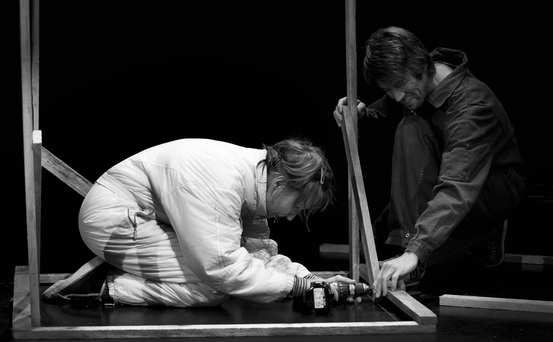
Authors and performers: Kaja Kann & Juha Valkeapää
Co-producers: Nordwind Festival, Pardimäe Lokaal, Kanuti Gildi SAAL
Duration: 80’
Premiere:
- What did I say?
- That you don't love me.
- But I do.
In Estonia and Finland people believe that a man is not a man if he has not built a house. And once that house is ready, he starts to build a new one. It seems a good place to build a house talks about life, dreams and misunderstandings.
- What will a house become when nobody lives there?
- It will die.
http://vimeo.com/44937072
Co-producers: Nordwind Festival, Pardimäe Lokaal, Kanuti Gildi SAAL
Duration: 80’
Premiere:
- What did I say?
- That you don't love me.
- But I do.
In Estonia and Finland people believe that a man is not a man if he has not built a house. And once that house is ready, he starts to build a new one. It seems a good place to build a house talks about life, dreams and misunderstandings.
- What will a house become when nobody lives there?
- It will die.
http://vimeo.com/44937072
SPA
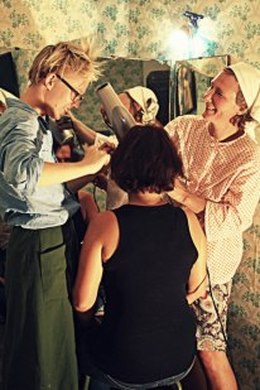
By Maike Lond and Kaja Kann
Premiere: 2012, AmbulARToorium, Kasepää village, Estonia.
It is a small village, where most of the population are Old Believers.
SPA is a private performance where the member of the audience is welcomed to take a moment to breathe. The performer could be seen as a guide, as a caring support giving time and space for the visitor to let go.
You enter, we greet. I introduce myself. I ask your name. I feel you are tenced. I put my hand on your shoulder and I'll tell you that it is ok, don't be afraid. I'm here to make you happy. Why are You here, I wonder while ducking you under the blanket. Why are you so sad, why are you so fake? Tension is gone. Thank you for shaving my legs. You are You again. At least you think so. Later, for farewell, we'll have a zip of cherry.
- do you really wanna touch those local hairy men who are sitting in the streets here?
- yes.
- but they are so old.
- yes they are.
- but they are drunks.
- is that contagious?
http://www.youtube.com/watch?v=SQkf66O_3vE&list=UUkgStgDEBJRzy_hdVTm2pfA&index=1&feature=plcp
Premiere: 2012, AmbulARToorium, Kasepää village, Estonia.
It is a small village, where most of the population are Old Believers.
SPA is a private performance where the member of the audience is welcomed to take a moment to breathe. The performer could be seen as a guide, as a caring support giving time and space for the visitor to let go.
You enter, we greet. I introduce myself. I ask your name. I feel you are tenced. I put my hand on your shoulder and I'll tell you that it is ok, don't be afraid. I'm here to make you happy. Why are You here, I wonder while ducking you under the blanket. Why are you so sad, why are you so fake? Tension is gone. Thank you for shaving my legs. You are You again. At least you think so. Later, for farewell, we'll have a zip of cherry.
- do you really wanna touch those local hairy men who are sitting in the streets here?
- yes.
- but they are so old.
- yes they are.
- but they are drunks.
- is that contagious?
http://www.youtube.com/watch?v=SQkf66O_3vE&list=UUkgStgDEBJRzy_hdVTm2pfA&index=1&feature=plcp
TALK TO ME
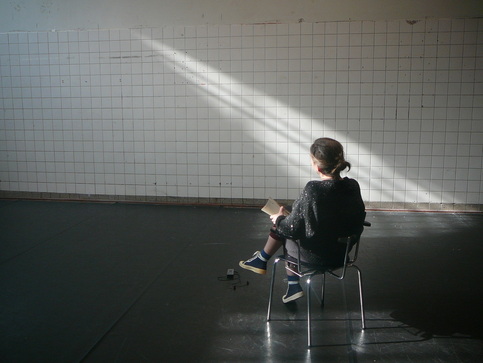
Idea and direction: Mart Kangro
Performance and creation: Kaja Kann, Juha Valkeapää, Taavi Kerikmäe, Mart Kangro, Vera Nevanlinna, Tiina Tauraite
Dramaturgical assistance: Christina Ciupke, Thomas Lehmen
Co-produced by: Kanuti Gildi SAAL (Tallinn), ZODIAK Center for New Dance (Helsinki)
Supported by: Estonian Ministry of Culture, Cultural Endowment of Estonia, PACT Zollverein Essen, Nordic-Baltic Mobility Programme, Estonian Embassy in Helsinki
Duration: 90'
Premiere: 22.08.2011 festival JuhlaViikot, Helsinki
“Talk to Me” revolves around the problematics related to the performativity.
On top of zigzaging across the osmotic line separating the character and the performer as well as humorously playing with the duality of addresser and addressee it tries to describe the microcosm of an individual.
http://www.youtube.com/watch?v=YOHTRxqUS3M
Performance and creation: Kaja Kann, Juha Valkeapää, Taavi Kerikmäe, Mart Kangro, Vera Nevanlinna, Tiina Tauraite
Dramaturgical assistance: Christina Ciupke, Thomas Lehmen
Co-produced by: Kanuti Gildi SAAL (Tallinn), ZODIAK Center for New Dance (Helsinki)
Supported by: Estonian Ministry of Culture, Cultural Endowment of Estonia, PACT Zollverein Essen, Nordic-Baltic Mobility Programme, Estonian Embassy in Helsinki
Duration: 90'
Premiere: 22.08.2011 festival JuhlaViikot, Helsinki
“Talk to Me” revolves around the problematics related to the performativity.
On top of zigzaging across the osmotic line separating the character and the performer as well as humorously playing with the duality of addresser and addressee it tries to describe the microcosm of an individual.
http://www.youtube.com/watch?v=YOHTRxqUS3M
LOKAALIS TÄNA: KANN/VALKEAPÄÄ
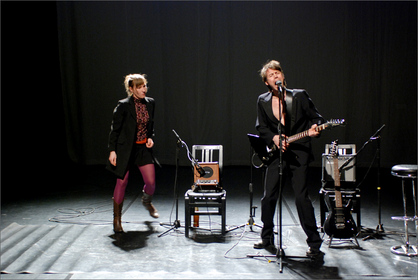
Authors and performers: Kaja Kann & Juha Valkeapää
Premiere: 19.03.2009 club-lounge JUUKSUR, Tallinn
The structure of the piece is based on songs, also. That’s where the common factors end. Namely, ”At the Lokaal tonight” is not based on representing something, nor in some effort to convince audience on the authenticity of lyrics or skill of the performer; nor is it based on some vague reciprocal relationship between audience and performer. It seem rather, that the performance is in some serious undertaking of collapse on its way to embarassing moment of silence; yet, Kann and Valkeapää are guiding this assembly forwards with peculiar and crude buoyancy. ”At the Lokaal tonight: Kann/Valkeapää” is a performance as fresh and true as no-wave punk; as blatantly experimental as live art at its best.
http://www.youtube.com/watch?v=MjxwszdxWyA
http://www.myspace.com/kannvalkeapaa
Premiere: 19.03.2009 club-lounge JUUKSUR, Tallinn
The structure of the piece is based on songs, also. That’s where the common factors end. Namely, ”At the Lokaal tonight” is not based on representing something, nor in some effort to convince audience on the authenticity of lyrics or skill of the performer; nor is it based on some vague reciprocal relationship between audience and performer. It seem rather, that the performance is in some serious undertaking of collapse on its way to embarassing moment of silence; yet, Kann and Valkeapää are guiding this assembly forwards with peculiar and crude buoyancy. ”At the Lokaal tonight: Kann/Valkeapää” is a performance as fresh and true as no-wave punk; as blatantly experimental as live art at its best.
http://www.youtube.com/watch?v=MjxwszdxWyA
http://www.myspace.com/kannvalkeapaa
LIFT
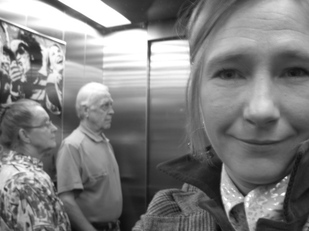
"Lift / Elevator“
performance
idea, performance: Kaja Kann
Premiere: 07.-10.11.2011 NU Performance Festival "Hospitality”
In an elevator, a tiny, cramped space, strangers have to inevitably share time in order to be brought to their respective rooms. Strangeness and intimacy are unavoidably interconnected, resulting in an uneasy silence and conscious ignorance. Estonian artist Kaja Kann who is staying in such a LIFT for the duration of the festival searches for the moment when strangers can become friends, when the barrier of social reservation turns into a smile.
http://www.youtube.com/watch?v=93bjg2fWYAA&list=UUkgStgDEBJRzy_hdVTm2pfA&index=6&feature=plcp
performance
idea, performance: Kaja Kann
Premiere: 07.-10.11.2011 NU Performance Festival "Hospitality”
In an elevator, a tiny, cramped space, strangers have to inevitably share time in order to be brought to their respective rooms. Strangeness and intimacy are unavoidably interconnected, resulting in an uneasy silence and conscious ignorance. Estonian artist Kaja Kann who is staying in such a LIFT for the duration of the festival searches for the moment when strangers can become friends, when the barrier of social reservation turns into a smile.
http://www.youtube.com/watch?v=93bjg2fWYAA&list=UUkgStgDEBJRzy_hdVTm2pfA&index=6&feature=plcp
OLD BUDDYS - united dancers of ZUGA
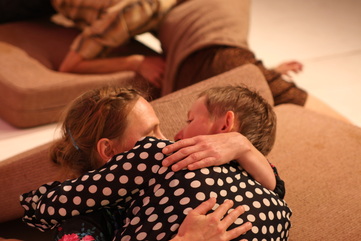
Performers, authors: Tiina Mölder, Helen Reitsnik, Kalle Tikas, Jarmo Karing, Kaja Kann
Premiere: 15.11.2010 Kanuti Gildi SAAL, Tallinn
With ZUGA, the simplicity was most important . It doesn't mean banality nor repeating the known-to-all. A bright taste of ZUGA comes from them not trying to look smarter, better, prettier or cooler, than they are. Even the mistakes or the bad english, that upsets some of the viewer, is a part of ZUGAs standpoint. In the blog of ZUGAs "Old buddies" they say, that it is important for them to "do thing for real", leading to that, that even the snacks that were shared after the show were made by themselves. They take their time and relate personally. At the same time the ZUGA personality does not refer to ignorance or egoism, that is excluded with self-irony and sweet absurdness.
http://www.youtube.com/watch?v=4D1mwsktqWM&list=UUkgStgDEBJRzy_hdVTm2pfA&index=2&feature=plcp
Premiere: 15.11.2010 Kanuti Gildi SAAL, Tallinn
With ZUGA, the simplicity was most important . It doesn't mean banality nor repeating the known-to-all. A bright taste of ZUGA comes from them not trying to look smarter, better, prettier or cooler, than they are. Even the mistakes or the bad english, that upsets some of the viewer, is a part of ZUGAs standpoint. In the blog of ZUGAs "Old buddies" they say, that it is important for them to "do thing for real", leading to that, that even the snacks that were shared after the show were made by themselves. They take their time and relate personally. At the same time the ZUGA personality does not refer to ignorance or egoism, that is excluded with self-irony and sweet absurdness.
http://www.youtube.com/watch?v=4D1mwsktqWM&list=UUkgStgDEBJRzy_hdVTm2pfA&index=2&feature=plcp
KALLOCAIN - OPERA FOR TWO VOICES
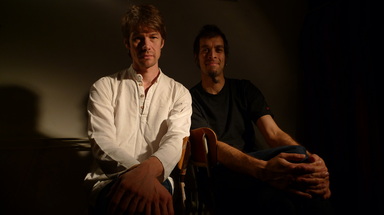
Director and lights: Kaja Kann
Voice: Juha Valkeapää
Voice and electonics: Girilal Baars
Premiere: 14.08.2010 Kalv Festival, Sweden
Originally the brain-child of Girilal Baars, who read the novel in his youth, the stage opera Kallocain is the result of a two-year long collaboration between Juha Valkeapää and Girilal. In May 2009, Kalv Festivalchose Kallocain as its Project Lab 2009 – a project-in-residence. At this point the director Kaja Kann was recruited into the process.
http://www.kallocain.info/
Voice: Juha Valkeapää
Voice and electonics: Girilal Baars
Premiere: 14.08.2010 Kalv Festival, Sweden
Originally the brain-child of Girilal Baars, who read the novel in his youth, the stage opera Kallocain is the result of a two-year long collaboration between Juha Valkeapää and Girilal. In May 2009, Kalv Festivalchose Kallocain as its Project Lab 2009 – a project-in-residence. At this point the director Kaja Kann was recruited into the process.
http://www.kallocain.info/
50 LOVELY WAYS TO DIE
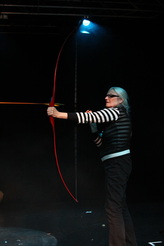
Authors: Kaja Kann & Juha Valkeapää
Music: Juha Valkeapää
Light: Pietu Pietiäinen
Special effects: Terasmees
Duration: 70'
Premiere 3.07.2008 Theater festival Baltoscandal, Rakvere, Estonia
The authors idee geniale was to write a a script they can use in directing a performance for people, who do not know how to act on stage, in four days. The performance consists of 15 different stories in which a person is dying or willing to die because of love. The stories derive from our everyday life as well from the ancient myths and legends.
In addition to four professionals, also 16 volunteers with no previous theatre experience, participate in the performance. The volunteers had rehearsals for four days.
http://www.theatre.lv/old2_theatre-fit.org/downloads/Baltoscandal/50lovely_ways_to_die_Martin_Bernatek.pdf
Music: Juha Valkeapää
Light: Pietu Pietiäinen
Special effects: Terasmees
Duration: 70'
Premiere 3.07.2008 Theater festival Baltoscandal, Rakvere, Estonia
The authors idee geniale was to write a a script they can use in directing a performance for people, who do not know how to act on stage, in four days. The performance consists of 15 different stories in which a person is dying or willing to die because of love. The stories derive from our everyday life as well from the ancient myths and legends.
In addition to four professionals, also 16 volunteers with no previous theatre experience, participate in the performance. The volunteers had rehearsals for four days.
http://www.theatre.lv/old2_theatre-fit.org/downloads/Baltoscandal/50lovely_ways_to_die_Martin_Bernatek.pdf
WOLF AND WOMAN
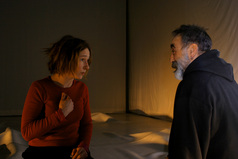
Authors: Tiina Mölder, Kaja Kann, Bush Hartshorn
Performers: Kaja Kann, Bush Hartshorn
Premiere: 2006 Kanuti Gildi SAAL, Tallinn, Estonia
"Woman and the wolf" became the hit. Honestly and with a great feeling of empathy a story of a person and his relations with another was told. The ability and disability of communication. This is theatre, that shows that only writing and learning the words, is not enough.
- Estonian Theatre Award "best dance performance 2006" - for ZUGA's performance „Wolf and woman“
- Philip Morris Dance Award 2006 "the performance of the year" for ZUGA's performance „Wolf and woman“
Performers: Kaja Kann, Bush Hartshorn
Premiere: 2006 Kanuti Gildi SAAL, Tallinn, Estonia
"Woman and the wolf" became the hit. Honestly and with a great feeling of empathy a story of a person and his relations with another was told. The ability and disability of communication. This is theatre, that shows that only writing and learning the words, is not enough.
- Estonian Theatre Award "best dance performance 2006" - for ZUGA's performance „Wolf and woman“
- Philip Morris Dance Award 2006 "the performance of the year" for ZUGA's performance „Wolf and woman“
CIRCLE - OMAtsirkus
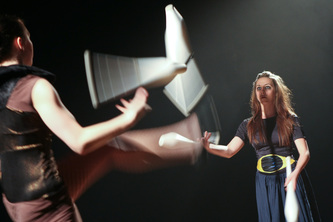
Director: Kaja Kann
Team: Margus Terasmees, Merit Ridaste, Heidi Kann
Artists: Kristin Made, Kädi Metsoja, Johanna Terasmees, Anni Veskimäe, Johanna Sooba, Kert Erhard Ridaste, Maria Netti Nüganen, Lee Kelomees, Tea Teearu
Music: Dimitris Kamarotos
Premiere: 2007 at Kanuti Gildi SAAL
Once upon a time, there lived people, who were called circus people.
In one moment a curse fell upon the circus troop.
http://www.youtube.com/watch?v=UkzZeh9jgHU&list=UUkgStgDEBJRzy_hdVTm2pfA&index=13&feature=plcp
Team: Margus Terasmees, Merit Ridaste, Heidi Kann
Artists: Kristin Made, Kädi Metsoja, Johanna Terasmees, Anni Veskimäe, Johanna Sooba, Kert Erhard Ridaste, Maria Netti Nüganen, Lee Kelomees, Tea Teearu
Music: Dimitris Kamarotos
Premiere: 2007 at Kanuti Gildi SAAL
Once upon a time, there lived people, who were called circus people.
In one moment a curse fell upon the circus troop.
http://www.youtube.com/watch?v=UkzZeh9jgHU&list=UUkgStgDEBJRzy_hdVTm2pfA&index=13&feature=plcp
